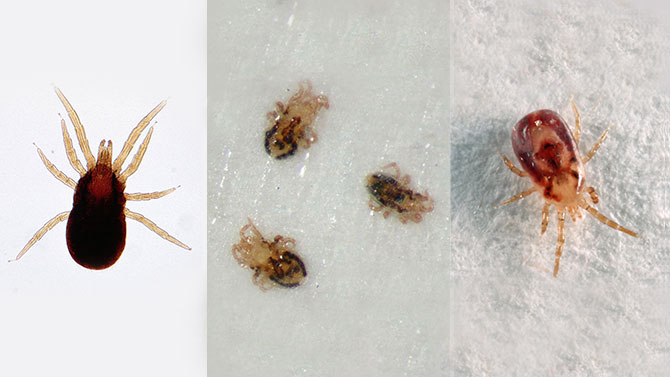
Information about lice & mites
Invisible bug
Lice are actually Mites. Mites are parasites of bird and mammals. Most infestations originate from having pest species of birds such as sparrows, pigeons and starlings nesting in or on your roof. Most problems occur in humid periods. Lice are hard to see but can cause unimaginable discomfort for the client.
Bird Lice or Bird Mites
Characteristics:
Bird Mites commonly known as bird lice, Appearing more in Spring and early Summer. Their small and extremely mobile, with eight legs, oval shape and a sparse covering of short hairs. Bird mites are parasites feeding on the blood of host bodies such as pigeons, poultry and humans. Bird mites are barely visible to the eye, which makes them difficult to detect on the skin until blood is digested, then appearing red and blackish. We often are told something crawling over our skin looks like salt and pepper.
Habits:
Contact with humans usually occurs after birds gain entry to roof cavities via broken tiles or through unprotected eaves, of homes, Aviaries, garages, sheds and factories to construct their nests. Infestations occur from birds roosting on the outside of dwellings, window ledges and awnings, carried though the buildings by the wind. T he mites have a short life cycle up to 7 days and can rapidly generate large populations often tens of thousands.
Book Lice
Characteristics:
Booklice found inside homes are wingless and very tiny: less than 1/16 of an inch long. While their back legs are thicker than the other four, and resemble the legs found in jumping insects, booklice do not jump, but run about rather quickly. Adult booklice range in color from translucent white to gray or brown. Females can produce about 60 eggs during the warm summer months and their life cycle (from egg to adult) can be completed in less than one month. When cool temperatures prevail, female booklice produce fewer eggs and the time required to complete their life cycle is over three months. Females deposit their eggs singly and often conceal them by covering with debris. Booklice undergo simple metamorphosis, that is their nymphs look just like adults except that they are much smaller and sexually immature. The common house-infesting booklice normally have four nymphal stages.
Habits:
Booklice, also called psocids, are not true lice. While they resemble lice in size and shape, booklice feed only on fungi or mold. If you find them in grain or other stored food products, it is an indication of high humidity which encourages mold growth. In addition to food products, psocids may be found under wallpaper, in furniture, along the sides of windows or on window sills around potted plants. Booklice do not bite, transmit disease, or damage food or fabric, but they can be very annoying when present in large numbers.
At All Bugs our licensed technicians can assist you with a flexible, tailored solution to suit your individual needs we can prevent all pests from becoming a problem in your home or workplace. Please contact us to help you maintain an environment free of pests. Please call (07)3324 0111 to make an appointment.

